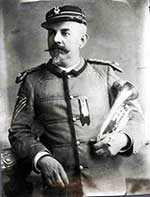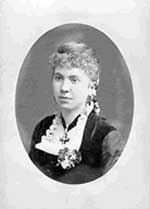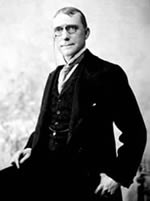City Hall & Delphi Opera House - Quick Facts
pdf
Click here for quick facts download.
(53 KB)
Balls were held frequently in the Hall, as were lectures, dinners, concerts, demonstrations, and other entertainments.
1996—DPS acquires 2/3 of the building; rst feasibility study on restoring the Opera House.
1998—Assion-Ruffing Building & Opera House listed in National Register of Historic Places.
2005—Tonsil Klackers perform in the Opera House during Old Settlers Celebration— first performance since 1914!
2005—Opera House Task Force formed to focus on restoration.
2006—Structural Analysis completed.
2006-2007—Schematic Designs for Restoration; remaining 1/3 of building purchased.
2007-2009—Major Facade Restoration utilizing Historic Preservation Fund (HPF) grant and matching funds.
2009-2010—Wallpaper and other decorative elements sampled and analyzed in a Decorative Arts Analysis.
2010-11—Plaster medallions and remaining ceiling removed and the roof was replaced with HPF grant.
2012—Delphi becomes a Stellar Community; the Delphi Opera House restoration is the centerpiece!
2014—Construction begins for Delphi Opera House restoration. $4.3 million dollar project with $2.6 million from Stellar funding and remaining $1.7 million pledged by DPS. The Society is now working to retire the debt.
2015—Delphi Opera House reopened as a community center and performing arts venue! The facility is owned by the Delphi Preservation Society and operated by Delphi Opera House, Inc.
City Hall Timeline
Completed in 1865 by Mr. Cook of Lafayette for merchants Joseph Assion and John Ruffing. “City Hall” referred to the Grand Hall on the third floor—a free span of 60’ x 60’. This City Hall did not have a government function. The first event in the hall was a ball held on June 16, 1865 for Company B, 86th Indiana Volunteers and other soldiers returning home from the Civil War. Another ball was held there a few weeks later to celebrate the 4th of July.Balls were held frequently in the Hall, as were lectures, dinners, concerts, demonstrations, and other entertainments.
- In March 1868 “The Grand Tableau: a view of Camp Kessler by Moonlight...” was held in the Hall.
- A year later, a velocipede demonstration was held there. The velocipede was the precursor to the modern bicycle.
- In August 1870, John Lathrope, Jr. opened a bakery, confectionery, and farmers’ lunch room in the No. 1 block of the City Hall Building—where the ticket lobby is now. The painting and papering of the rooms was noted in the Delphi Times for the quality of the workmanship.
- A phrenology lecture was held by Alice Manville in the hall in 1873.
Opera House Timeline
- The Lathrope & Ruffing Opera House had its Grand Opening on April 7, 1882 with the Litta Opera Company starring soprano Marie Litta. The performance was magnificent as were the trappings of the Hall. 500 people were reported on opening night!!
- Beginning in 1882, theater manager Lathrope rented rooms in the Greenup building (later Crosby hotel) to be used as dressing rooms.
- Minstrel shows, comedy and dramatic performances, graduation ceremonies, operas, recitations, concerts were all part of the fare in the Opera House.
- December 29th, 1882, James Whitcomb Riley gave the first of at least six performances in the Opera House, among them performances held in September and December of 1884.
- The Lathrope & Ruffing Opera House soon became known simply as the Delphi Opera House. In addition to traveling troupes and other show groups, it was also home to local dramatic presentations and concerts.
- In March 1898, the first cinematography exhibit was held in the Opera House with a veriscope projection of the moving pictures taken during the 1897 Corbett-Fitzsimmons fight.
- In 1914, the Delphi Opera House was closed by the Fire Marshall following a fire at Lafayette’s Dreyfus Theater resulting in the requirement that all upper story auditoriums have multiple exits.
- The Delphi Opera House became a storage room for store displays, shipping crates, and merchandise. Over the ensuing decades the roof and windows deteriorated allowing pigeons to come and go. The once grand balcony railing became their roost.
Restoration Timeline
1994—Delphi Preservation Society founded.1996—DPS acquires 2/3 of the building; rst feasibility study on restoring the Opera House.
1998—Assion-Ruffing Building & Opera House listed in National Register of Historic Places.
2005—Tonsil Klackers perform in the Opera House during Old Settlers Celebration— first performance since 1914!
2005—Opera House Task Force formed to focus on restoration.
2006—Structural Analysis completed.
2006-2007—Schematic Designs for Restoration; remaining 1/3 of building purchased.
2007-2009—Major Facade Restoration utilizing Historic Preservation Fund (HPF) grant and matching funds.
2009-2010—Wallpaper and other decorative elements sampled and analyzed in a Decorative Arts Analysis.
2010-11—Plaster medallions and remaining ceiling removed and the roof was replaced with HPF grant.
2012—Delphi becomes a Stellar Community; the Delphi Opera House restoration is the centerpiece!
2014—Construction begins for Delphi Opera House restoration. $4.3 million dollar project with $2.6 million from Stellar funding and remaining $1.7 million pledged by DPS. The Society is now working to retire the debt.
2015—Delphi Opera House reopened as a community center and performing arts venue! The facility is owned by the Delphi Preservation Society and operated by Delphi Opera House, Inc.



 ©
Delphi Opera House
©
Delphi Opera House